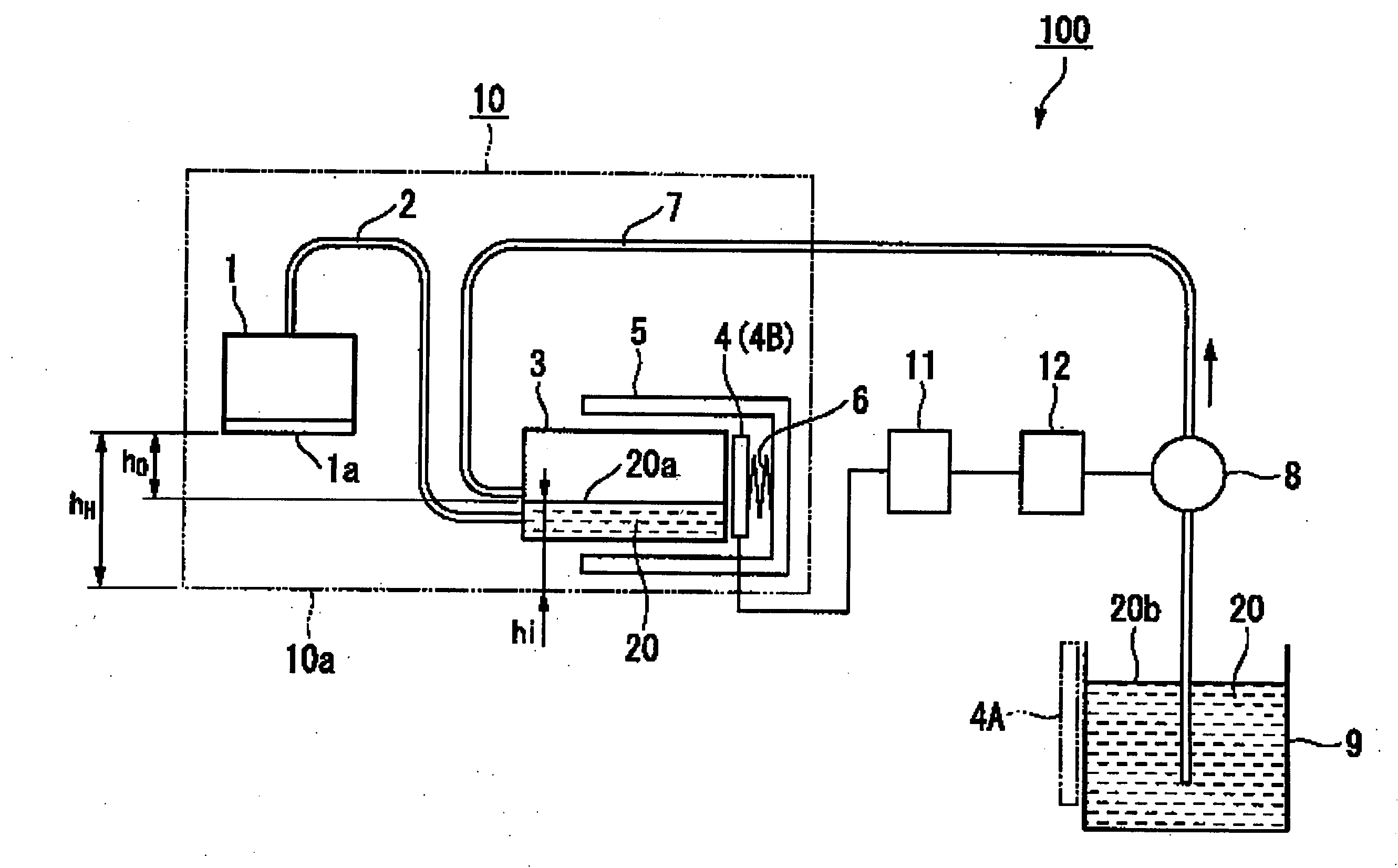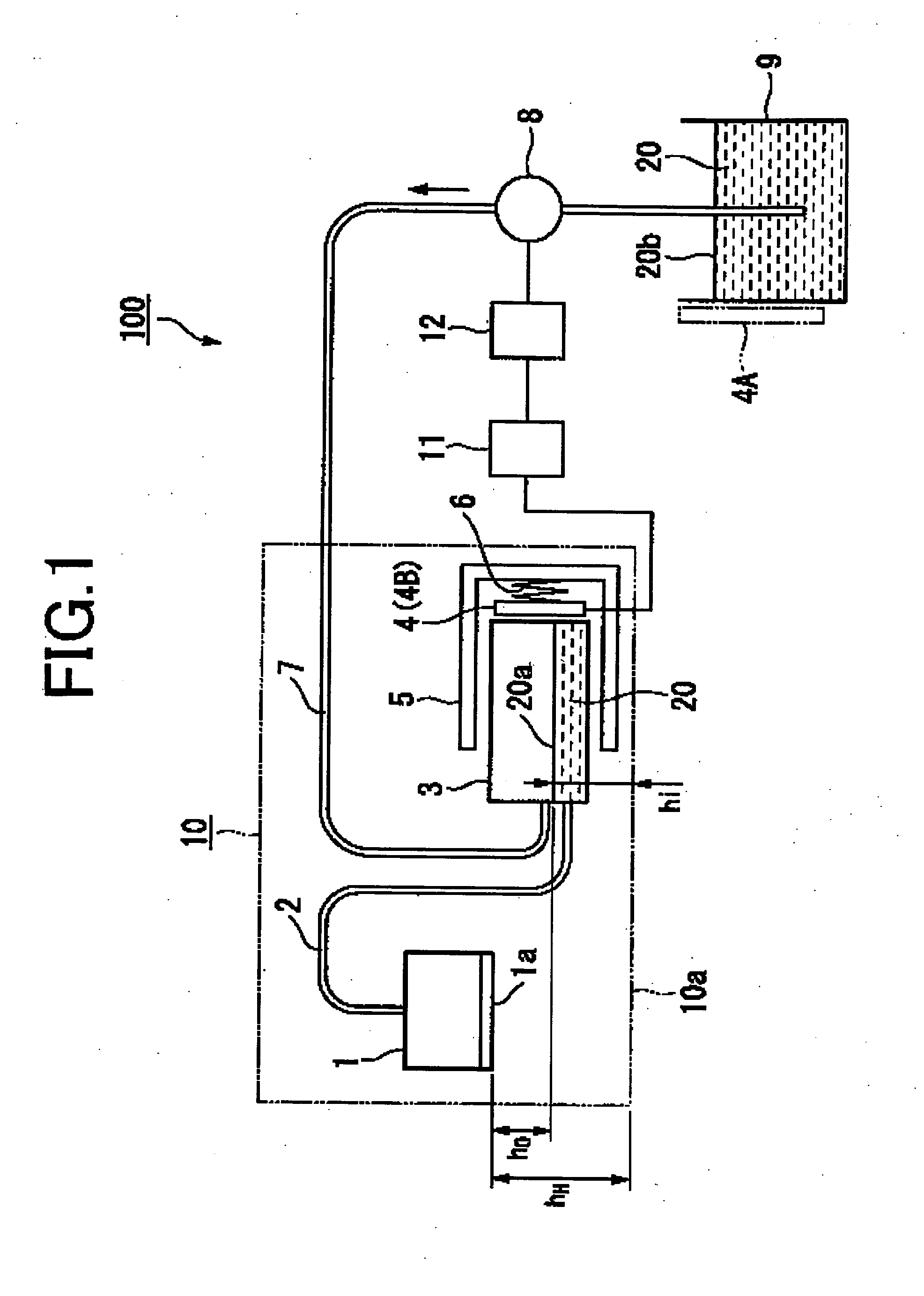Remaining amount detection sensor and ink-jet printer using the same
- Summary
- Abstract
- Description
- Claims
- Application Information
AI Technical Summary
Benefits of technology
Problems solved by technology
Method used
Image
Examples
first embodiment
[0057]A description is given of a remaining amount detection sensor according to a first embodiment of the present invention as well as an ink-jet printer using the same.
[0058]FIG. 1 is an explanatory block diagram schematically showing a general structure of the ink-jet printer using the remaining amount detection sensor according to the first embodiment of the present invention. FIG. 2 is a perspective view showing an arrangement state of the remaining amount detection sensor according to the first embodiment of the present invention. FIG. 3 is a perspective view showing a structure of the remaining amount detection sensor according to the first embodiment of the present invention. FIG. 4 is a cross-sectional diagram of the remaining amount detection sensor according to the first embodiment of the present invention taken along the line A-A of FIG. 2. FIG. 5 is a circuit diagram showing an example of a remaining amount detection circuit for taking out an output voltage from the rem...
second embodiment
[0101]A description is given of a remaining amount detection sensor according to a second embodiment of the present invention.
[0102]FIG. 8 is a perspective view showing a structure of the remaining amount detection sensor according to the second embodiment of the present invention. FIG. 9 is a cross-sectional diagram of a side view of an arrangement state of the remaining amount detection sensor according to the second embodiment of the present invention. FIGS. 10A and 10B are graphs each schematically showing a relation between a liquid level position in a container and a capacitance of a detection electrode of the remaining amount detection sensor according to the second embodiment of the present invention. An axis of abscissa represents the liquid level position and an axis of ordinate represents the capacitance to be detected.
[0103]As shown in FIGS. 8 and 9, a remaining amount detection sensor 4A according to the second embodiment of the present invention includes detection elec...
third embodiment
[0120]A description is given of a remaining amount detection sensor according to a third embodiment of the present invention.
[0121]FIG. 11 is an exploded perspective view showing arrangement of electrodes of the remaining amount detection sensor according to the third embodiment of the present invention. FIG. 12 is a cross-sectional diagram of a side view of a structure of the remaining amount detection sensor according to the third embodiment of the present invention.
[0122]As shown in FIGS. 11 and 12, a remaining amount detection sensor 4B according to the third embodiment of the present invention includes a guard electrode 41e (third guard electrode), a reference electrode 41a, and a dielectric layer 41b, in addition to a detection part 41A which is structured in the same manner as the remaining amount detection sensor 4 of the first embodiment.
[0123]The guard electrode 41e is a conductive layer having the same shape and made of the same material as the guard electrode 4d, is disp...
PUM
 Login to View More
Login to View More Abstract
Description
Claims
Application Information
 Login to View More
Login to View More - R&D
- Intellectual Property
- Life Sciences
- Materials
- Tech Scout
- Unparalleled Data Quality
- Higher Quality Content
- 60% Fewer Hallucinations
Browse by: Latest US Patents, China's latest patents, Technical Efficacy Thesaurus, Application Domain, Technology Topic, Popular Technical Reports.
© 2025 PatSnap. All rights reserved.Legal|Privacy policy|Modern Slavery Act Transparency Statement|Sitemap|About US| Contact US: help@patsnap.com



